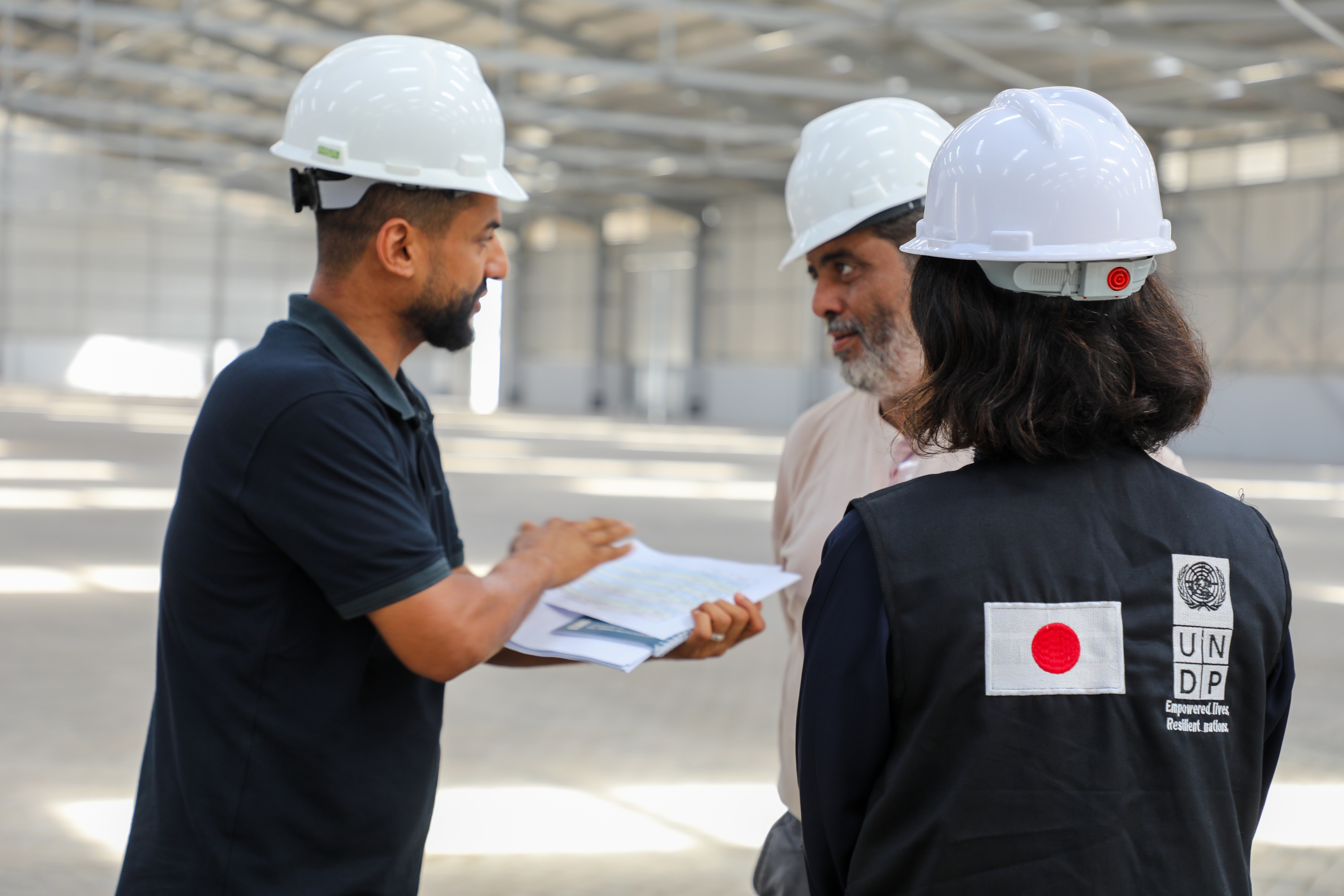New waves of hope: rehabilitating the port of Aden to enhance economic growth in Yemen
August 25, 2024

Yemen is home to about 2,500 kilometers of coastline, making for invaluable maritime economy opportunities. In line with this, an ambitious project has emerged to enhance the operational capacity of the Port of Aden, a major seaport in southern Yemen. This project aims to modernize and develop the port's infrastructure, improve ship reception, and reduce time required for overall loading and unloading operations.

A photo from inside transit shed number on

A photo of transit shed number two almost completed
An essential maritime facility aiding the entry of humanitarian and commercial goods to Yemen, the rehabilitation of the Port of Aden also contributes to the reduction of port charges, which are currently absorbed by Yemeni consumers.
Mr. Mahdi Al-Daghari, the Deputy Director General of Berths and Yards at the Port of Aden, highlights the importance of sheds in any port's infrastructure, saying: “They preserve goods in their original quality during temporary stoppages in maritime transport and facilitate the unloading and handling of goods. Sheds serve as sorting and storage facilities until the items are delivered to their intended recipients.”

During the reconstruction operations of the transit sheds in the Port of Aden.

Due to conflict, the Port of Aden, especially Sheds One and Two, were significantly affected, rendering them unusable. In recent years, economic conditions in Yemen prevented the port administration from rehabilitating the two transit sheds. Imported goods should be kept safe in the transit sheds to protect them from weather damage until the completion of discharging and marking. Due to the inability of the transit sheds to keep goods in safe conditions, the goods are transferred to other warehouses located at a distance of 200-500 meters from the berths.
However, through the Improvement of Efficiency in the Port of Aden Project, a joint effort by the United Nations Development Programme (UNDP), the Government of Japan, and the Government of Yemen represented by the Ministry of Transport and the Yemen Gulf of Aden Ports Corporation, the two sheds have been recently rehabilitated fully. These sheds are now capable of storing outbound, inbound, and transit goods, leading to improved port efficiency, reduced ship waiting times, and increased handling capacity.

Mr. Mahdi Al-Daghari, Deputy Director General of Berths and Yards at the Port of Aden.
Each transit shed measures 170 meters in length and 60 meters in width, providing storage space for thousands of tons of cargo.
Mr. Al-Daghari emphasizes the significant benefits of these sheds for the storage process, facilitating optimal storage of goods at the port.

UNDP staff with the consulting company inside Transit Shed Number One after its completion.
The project's ultimate goal is to improve the port's operational capacity by rehabilitating the two main transit sheds and digitalizing the Aden Container Terminal through a wireless communication system. UNDP, in collaboration with the Government of Japan and Government of Yemen, aims to achieve this as part of the Improvement of Efficiency in the Port of Aden Project.
Mr. Al-Daghari further states that “the project will result in a substantial and noticeable increase in handling volume at the port, paving the way to a better future.”

 Locations
Locations



